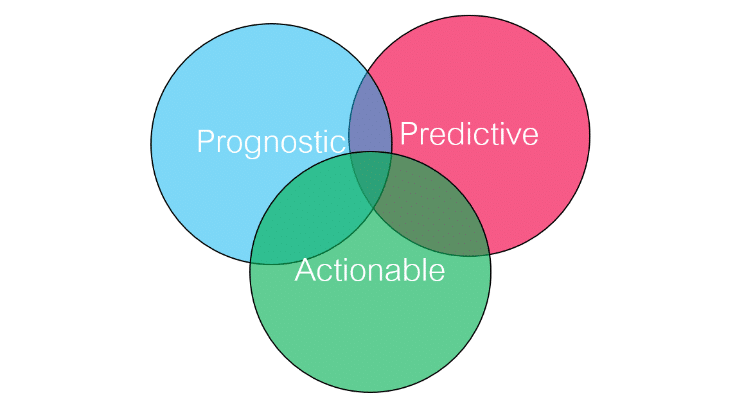Tl;dr: Biomarkers are not all the same and how you define them matters. Three ways to categorize them are: prognostic, predictive, and actionable.
We often hear about how certain things can “biomarkers”. Furthermore we hear that certain ones “predict” specific future outcomes.
There are very clear, specific, ways to think about biomarkers that need further clarification and discussion.
A biomarker is an objectively measureable variable that can be associated with a disease outcome and can be classified as prognostic, predictive, and/or actionable. These difference classifications are important and convey specific meaning.
Prognostic biomarkers objectively forecast the likelihood of an individual’s outcome, such as death or a hard disease end point. Prognostic biomarkers can be useful for identifying at-risk patients but do not necessarily predict response to therapy and are not truly “predicitive”.
For example, in our paper where we demonstrated that high levels of serum amyloid A in the blood forecasted progression to end stage renal disease and death among people with advanced diabetic kidney disease, serum amyloid A would be considered a prognostic biomarker (see relevant paper).
Predictive biomarkers objectively evaluate the likelihood of benefit or harm from a therapy. For example, the BRAF V600E mutation in breast cancer that predicts that treatment with the BRAF inhibitor vemurafenib improves outcomes makes that mutation a predictive biomarker.
Actionable biomarkers are those that can be used to target and assess management of disease. In the case of the BRAF mutation, this is both predictive and actionable.
In many cases, prognostic biomarkers that are mechanistically involved in the disease process and exhibit a unique molecular signature for a disease are ideal candidates to advance to prediction and action.
Notably, these biomarkers are not mutually exclusive and may overlap.

Using this paradigm to classify biomarkers is an essential framework for translating scientific discoveries into useful clinical tools that improve patient care.
